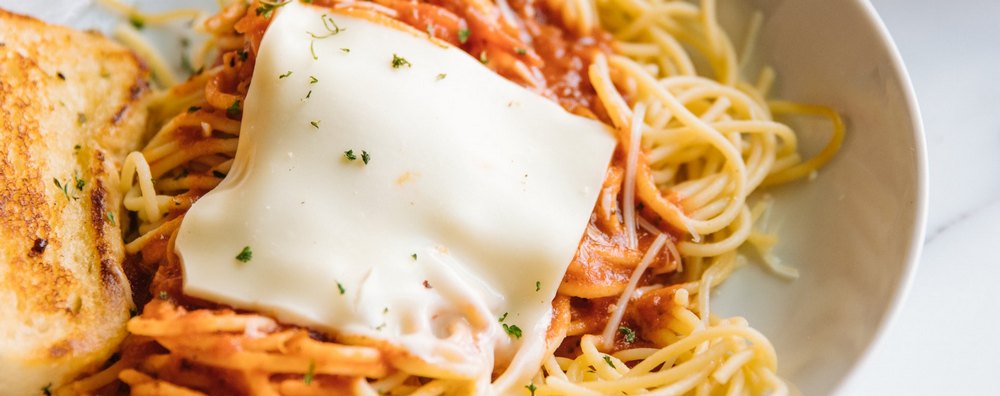Do you always consider having pasta in your menu? It is one of best sought food in Italian cuisine, and most people would think of spaghetti when they hear the word pasta.
Pasta is traditionally a staple food for Italians and the word pasta itself is an Italian term used to call the group of starchy noodles.
Pasta is typically made from grain or wheat flour mixed with water and eggs. It kneaded to form a dough which is then cut into different shapes, length, and sizes we call pasta.
Spaghetti is one of the commonly prepared pasta because you can easily tweak the taste and add whatever toppings you want to suit your appetite.
However, before having that red sauced pasta ready on your plate, the challenge lies in cooking your pasta to perfection. Perfections means you have a firm pasta and as they say it should be ‘al dente’.
Basically, we boil the pasta to cook it and sometimes that is the reason why the pasta is overcooked and become soggy and starchy.
Is there another technique to prepare the pasta? Yes, and that is by steaming your pasta.
You can steam your spaghetti pasta instead of boiling it. It will still taste as good as boiled pasta and it can also save you time because you do not need to sift it from water after cooking.
So, how do you steam your pasta to perfection, here is the simplest guide we prepared for you.
Steaming Spaghetti
It is not difficult to steam spaghetti pasta and get it ready for a hearty meal, but you need to use fresh or new pasta for the best outcome and prevent having lumpy pasta.
How to cook spaghetti using a steamer
You need to prepare what we need to use for steaming which are:
- Oil (it can be any plant-based oil available in your kitchen)
- Fresh pasta
- Water
- Steamer
Procedure:
- Place the pasta on your steamer plate and be sure to spread it flatly and evenly.
- Pour water into your pot such that the water covers all the pasta on the steamer plate.
- Put on the steamer’s lid and steam the pasta for not more than 8 minutes
- Turn the pasta on your steamer and steam it for another 7 minutes.
- Do steps 3 and 4 again and do it twice to ensure the pasta is cooked well.
- Transfer your steamed spaghetti pasta in a bowl.
- Put a tablespoon of oil in your pasta and turn the pasta so each noodle can be slightly oiled. It will prevent the pasta from sticking together.
While you are steaming the pasta, you can check whether the way it is cooked is enough for you. If you want it firm or soft will depend on how long you steamed the pasta but never overcook it.
Steaming Dried Pasta In A Pasta Steamer
You may use the all-purpose steamer pot but there is a steamer designed for steaming pasta. This pasta steamer can steam a pound of pasta in one cooking.
You maybe surprised that a pasta steamer is not really cooking pasta by steaming it. It is boiling the pasta in a big colander until it is cooked. After boiling, you can easily sieve the pasta by just pulling out the colander from the pot of boiling water.
It is easy to use and you can either cook dried or fresh pasta in it.
How to steam spaghetti pasta using pasta steamer
You need to prepare everything like:
- Pasta steamer
- Water
- Salt
- Dried or fresh pasta
Procedure:
- Pour water into the steamer until it is enough to sink the colander with pasta.
- Put a half a teaspoon of salt before boiling the water. This will give a light taste on the pasta.
- Boil the water.
- Submerge the steamer colander with pasta in the boiling water.
- For fresh spaghetti pasta, let it cook for 8 to 10 minutes. For dried spaghetti pasta, let it cook for 10 to 15 minutes. While cooking, be sure to check on the pasta every after 5 minutes so you can be sure you will get your desired softness or firmness.
- Pull out your colander from the pot of hot water. Handle it carefully to avoid burning your hands.
- While still on the colander, let it drain for a few minutes to ensure that excess water is removed.
- Served with your favorite sauce and toppings.

Steaming Lasagna Sheets
Lasagna is most people’s second favorite pasta which can be easily prepared at home. It is nice to see that stack of lasagna layered with meaty and cheesy sauce. On second thought, some find it difficult to cook the lasagna pasta and have it firmly and neatly layered.
Is there a technique or a special procedure for cooking lasagna sheets, or can I just steam it?
Here are the easy steps in cooking your lasagna sheets:
- Prepare a pan with lid for cooking the pasta.
- Layer the pasta in a pan with enough space to sink the pasta in water.
- Pour newly boiled water into the pan enough to submerge the pasta completely.
- Put on the pan’s lid and leave the pasta to be cooked by hot water for 25 minutes.
- Check if the lasagna pasta is well cooked before draining the hot water.
- After draining, you can now prepare your lasagna with sauce, meat, cheese and other garnishing.
Reheating Pasta By Steaming
Some people think it is very easy to reheat pasta but as easy as it seems, we should be careful when reheating it so it will not turn out burned, too dry or mushy.
You should know that it is important to keep the pasta soft and moist, not dry or burnt after reheating.
Which pasta do you want to reheat, plain cooked pasta or leftovers that is ready to eat with sauce and all? You can use a microwave to reheat cooked pasta, but it is best to reheat it by steaming. Steaming cooked pasta for less than 3 minutes can refresh your pasta and leave it moisten.
So, how do you reheat cooked pasta?
- Prepare your steamer filled with water enough for boiling. Leave ample space where you can place the steamer pan but do not sink it in the boiling water. Place the pan such that it will get steam and not boiled so the sauce will not become watery.
- Place your lasagna pasta on a pan or on the steamer colander.
- When the water boils, place the pan or steamer colander in the boiling water.
- Leave it to reheat for 3 minutes and do not overdo it so the pasta will not turn soggy.
- Take out the reheated pasta. Serve hot.
Related Questions
Here is some information that could help you too about cooking the pasta.
Do I need to buy a special steamer to steam pasta?
No, you do not need to buy a pasta steamer. If you don’t have it yet you wanted to steam your pasta. you can improvise by using your regular steamer. Just be sure you are doing it the right way. Follow the cooking time so you will not overcook it. However, if you can afford to buy the pasta steamer or steamer insert for pasta, it will be a lot easier for you.
Can you cook raw pasta in a sauce?
If you want a short-cut to cooking spaghetti or pasta in sauce, you can do so. It is good if you will cook it in a pot, but it is not recommended for steaming.
You need to prepare your sauce with ample amount of water, set it to boil and put in your pasta. While cooking, the water will dissipate while the pasta is being cooked so you will be left with that saucy pasta. Be sure to stir while it is being cooked to prevent the pasta from sticking together. You may also add a teaspoon of olive oil, it prevents the pasta to lump together.
Should I cook the pasta before baking it?
Baking uncooked pasta is never the best option. You should cook the pasta, then layer it with meat, cheese, and sauce before baking it.
You can either boil the pasta or steam the pasta as long as you are not overcooking it. Twenty minutes is not quite long enough to prepare you pasta al dente.
Steaming Pasta
Some might suggest that steaming the pasta is not the common method to cook it, but you can choose which is easier for you. Just keep in mind that your goal is to prepare your favorite pasta dish the easiest way you know how and that would save you time too. Since boiling it or steaming will still give you the perfect pasta for your spaghetti and other pasta dishes.


